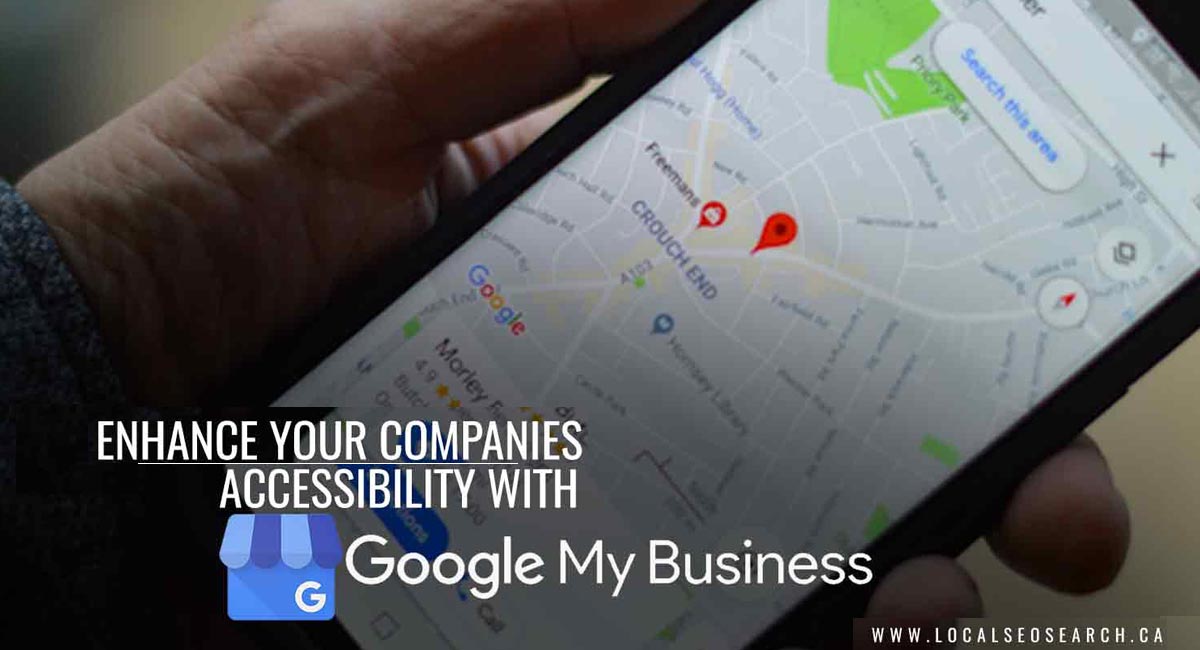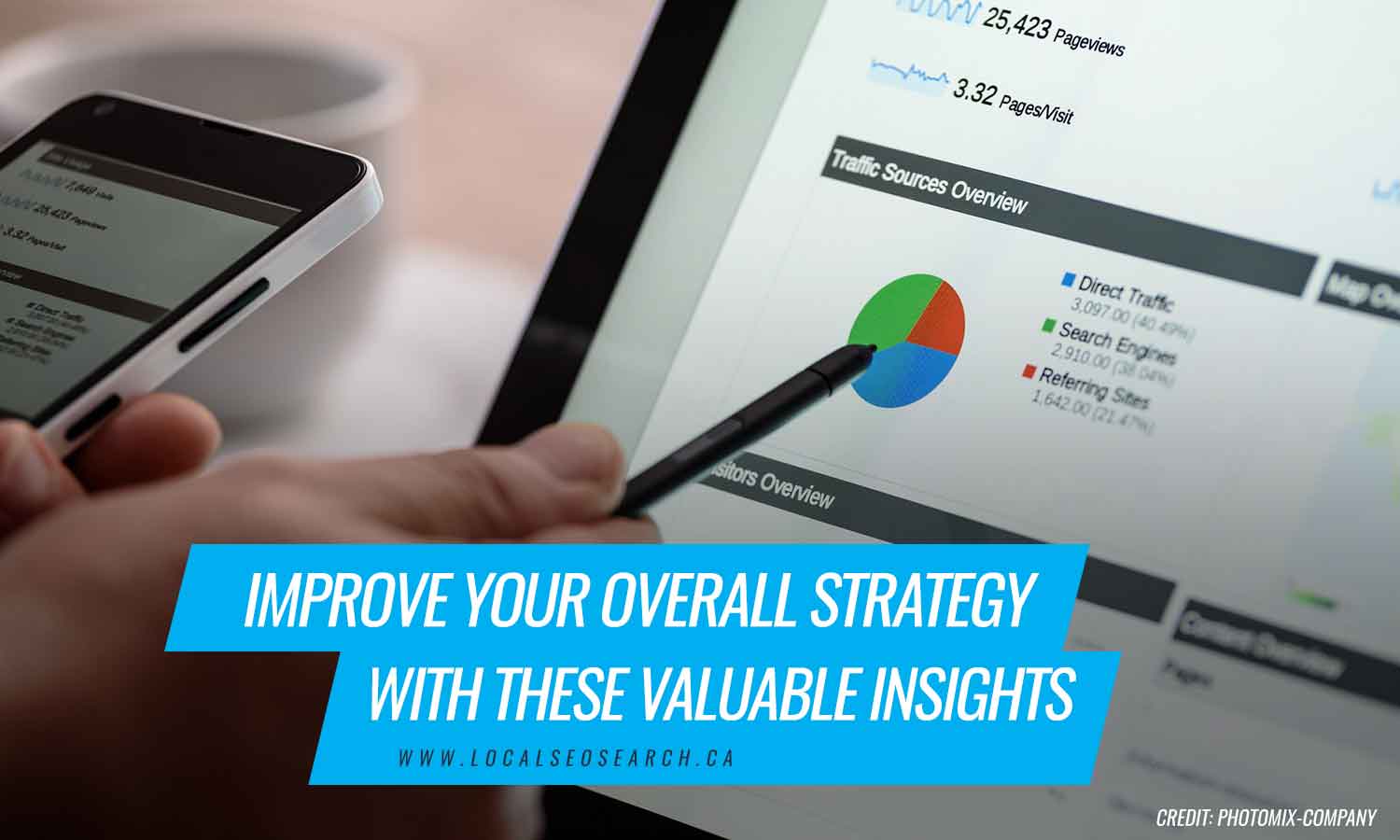0/5
(0 Reviews)


Online visibility is now essential. Anything you can do to provide more information to people searching for your product or service online is going to help with traffic in store or online. How do you create more business? You need a website that is optimized and is listed on Google My Business.
This is a platform that allows you to present your company’s information readily to users without requiring them to do much more than search your store name.
We’ll cover a little about what Google My Business is, as well as how the platform can help you understand your target audience. You’ll be surprised to know that there’s a lot of demographic information available that you can use to help your business.
If you were paying attention to online analytics, you may have noticed a change in your business website’s Google searches a few years back. There was a period of time when you actually had to click a link to get access to relevant information.
Now, as you’re probably aware, you can search for something and be presented the information immediately. Say, for example, you search “Joe’s Coffee Shop.” When you make the search, there’s likely to be a square on the right-hand side of the SERP that details Joe’s Coffee Shop’s address, hours, ratings, phone number, and more.
The same is true for questions that you might want to have answered. If you were looking to find the number of people in the world, you wouldn’t have to do much more than Google “how many people are there in the world?” There would be a drop-down answer, followed by a list of answers to similar questions. There is even a graph presented when you search that question, detailing the rise in population from 1960 to 2019.
The point is, people are getting used to having their questions answered before they even click a link. Immediate access to information is becoming the norm. Even if you put a considerable amount of effort into SEO, your local search traffic will be less impactful if you don’t have your business information presented immediately.
Here are the ten tips:
1. How “My Business” Fits
In order to get one of those coveted boxes of information, you have to register your company with Google My Business. It’s essential that you add all of your accurate business information (location, phone number, website, etc.) and verify that you and your site lay claim to the business.
Additionally, make sure to tag your business as a specific category. This will help in local searches, which are the primary reason that My Business will drive traffic to your site and store. A recent survey suggests that 82 percent of people who shop on their smartphones conduct such searches.
If you’re not sure of what we’re talking about, here’s an example:You’re hungry. You don’t want to go to the same restaurants that you always do, so you decide to pull out your phone and find something new. You search “Indian food near me.’” You weren’t aware that there were such restaurants in your town. To your surprise, you see one of those shiny boxes with business information pop up. You see the hours of the restaurant, then visit the site to review the menu.
That’s how people find information these days, and it’s important that you get on board.
There’s more to Google My Business, though. You can use the platform as a way to get insights into your customer base. Let’s talk about ten ways you can use My Business and Google Analytics to further understand your customers.
It should be noted that Google My Business includes analytics, so mentions of analytics here are not a separate program.
2. See Where Users Come From
If you’re used to using Google Analytics, you may have noticed that the only detail you get about a lot of your traffic is that it’s “organic.” While organic search traffic sounds nice, it doesn’t give you a lot of insight as to who is searching for you.
Setting up a custom campaign allows you to include parameters that track things like ad traffic and where users are coming to your site from. Once you know this, there’s a lot of useful information you can work with.
3. Use Geographic Information to Optimize
When you know where most of your users are, you can tune your site to try and attract the audiences that your missing.
From very broad regional information to more specific local information, you can see an accurate spread of the location of users who visit your site. Once you see a dead zone or area that isn’t searching for you, you can use local optimization strategies to reach those audiences.

4. See Pages People Like
Many pages get clicked initially, but aren’t engaging enough to keep users and lead them to make conversions.
You can now see which pages get “bounced.” Bounced pages are those that users land on but they don’t stay long. When you know which pages are attracting users, you can find the elements of them that may be attractive and translate them to your other pages.
This is a method of optimizing your site for user experience, leading to more sales and interest in your business.
5. Fine-tune Your SEO
By seeing what people are liking about your site and which things aren’t working, you can make some inferences about what to do next. Even if you’ve just scraped the surface of running SEO for your site, you have the potential to learn a lot from (even the fact that some pages are seeing success). Identify what you’ve done to the pages that are successful.
Maybe it is the volume of keywords or the presence of a high-powered backlink. Further, look into the nature of the writing on that page. How are these things different from the other, less successful pages on your site
Something is working, and it’s your job to find out what.
6. Categorize Your Audiences
It’s likely that you have a few different demographics (hopefully from your target market) visiting your site. Whether that means the users are separated geographically or by another indicator, you should be able to use analytics to identify separations in your user base.
You may find that those differences are part of the reason that some of your pages are less successful than others. Identifying the specific populations that visit your site and altering your optimization to cater to those groups can be an extremely effective way to get more traffic.
Different groups will utilize different keywords and have interests in different forms of media. This is largely a regional phenomenon, making it very easy to change to suit the need of your audience.

7. User Keyword Preferences
Hopefully, you’re familiar with the concept of keyword optimization. It is essentially the process of optimizing the content on your page with keywords that users are using in their search queries.
You want your content and your URLs to have relevant terms embedded. This will greatly help you in the search engine results pages. Half of the battle, though, is identifying which keywords and phrases are going to be best for your audience.
Google Analytics is a great tool for identifying the words that your audience is using. Who better to get user information from than the actual site that your users are frequenting? Google is the authority on this demographic keyword information, and it’s great that Google Analytics allows you to access that data.
You’ll want to know which keywords are being searched in addition to the competition associated with those words. Your niche may be seeing a lot of users searching “football tricks,” but the industries’ highest-power sites might be optimized for that keyword already.
Your chances of rising to the top of the SERPs could be increased if you chose a lower-volume keyword that also had less competition. Don’t waste your time trying to rank on terms that are occupied by the biggest sites.
8. Competitor Analysis
Your competitor’s target audience, ideally, is yours too. If you have some successful competitors that are doing well, Google Analytics also gives you insight into their efforts. Mostly, you’ll be able to compare and contrast your traffic volume to theirs. Seeing who is doing well should be enough to get you to check out their website.
With the knowledge you have from your own marketing and optimization platform, you should be able to identify the keywords that they’re using, the backlink volume, and other optimization features that could be contributing to the success.
In reality, you have a template for success in every website you visit. If they’re seeing results, the answers are hidden within the site, you just have to find them.
9. Use Demographic Data For Social Media
Different groups work more heavily on different social media platforms. Instagram, Facebook, Pinterest, and Twitter all have different groups of users. Of course, there are users who visit all four (as well as those who pick and choose). However, you will find that each platform has a different core user base.
Finding out who your core user base is should help you determine which social media platform to put marketing dollars toward. If you find your audience tends to use Facebook, you should divert a PPC budget to Facebook’s Ad platform. You’ll likely start seeing results.

10. Make User-Based Adjustments
Everything we’ve discussed is technically a user-based adjustment. What we’re talking about here, though, is changing your site so that it fits the needs of your users on a technical level. In other words, optimizing for the browsers that your users tend to use, the devices that they’re most likely to be on, and the type of media that they’re most responsive to.
You want to cater to your target audience, and you’re much more likely to attract them if your site interface suits the needs of the devices they use and the content they enjoy.
First and foremost, identifying your user base is a great gift from Google. Now that you know who your audience is, you can start to branch out and work from there.
Further, you can make predictions and decisions about what comes next. Knowing your users allows you to look into the research that predicts what they’re interested in and how that interest will change.
You now have the ability to stay one step ahead of the market through the demographic information you’ve gathered from Google My Business. You should also take risks with the information.
This group likes product A, and product A is complementary to product D, so you could run a promotion on product D to see how that works out. Test out little expansions of your product into your niche using the information you’ve gathered and see what happens.

Google My Business is an excellent tool for any site that wants to have a closer look at how it’s doing and which users are frequenting it. It can never hurt to have more specific data on your user base, and it’s essential that you use that data to adjust your site’s optimization. My Business doesn’t do all of the work for you, though.
As we mentioned, things like competitor analysis and optimization tweaks will require that you take a close look at the specifics of pages that are working well in the SERPs. You’ll then want to compare those pages to ones on your site that aren’t working as well and adjust them.
Google My Business has a lot to offer. It has so much, in fact, that it can be hard to keep up on it. That’s where the pros can help. If you’re looking to optimize your site the right way and see huge results, contact an expert Internet and content marketing team to learn more about what can be done, and move forward.
[/vc_column_text][/vc_column][/vc_row]
